You have no items in your shopping cart.
Tang Tailing Mausoleum
Introducing Tailing Mausoleum of Tang Dynasty
Tailing Mausoleum lies 130 km northeast of Xi'an. Tailing Mausoleum is a Tang Dynasty (618-907) imperial tomb. Tailing Mausoleum is where Emperor Xuanzong, the 6th emperor of the Tang Dynasty was buried. Emperor Xuanzong was born on Sept 8, 685. His name at birth was Li Longji. He became the 6th emperor of the Tang dynasty after his father Emperor Ruizong abdicated the throne in 712. Emperor Xuanzong died on May 3, 762, at the age of 78 and was buried at Tailing Mausoleum in March, 763. Ruled from 713 to 756, his reign of 43 years was the longest during the Tang dynasty. Emperor Xuanzong was credited with bringing Tang China to a pinnacle of culture and power. He was also blamed for ending Tang China's golden age in 755 due to the An Lushan Rebellion. He personally selected Mount Jinsu as his tomb site and his tomb chamber is located deep within this 851 meter elevated Mount Jinsu. It is recorded that Tailing Mausoleum was looted by the local governor of Yaozhou during the period of Five Dynasties shortly after the Tang Dynasty was overthrown in 907. Emperor Xuanzong was reburied in 973 and his tomb was renovated by the first emperor of Northern Song Dynasty in 973. Emperor Xuanzong's tomb chamber remained sealed since then.
Watch this video showcasing Tailing Mausoleum of Tang Dynasty
Kind Notice: This video is not available in China (YouTube is blocked). If you are in China, click here.
Tailing Mausoleum of Tang Dynasty Fast Facts
• Chinese Name: Tang Tai Ling 唐泰陵
• Best Time to Visit: All year round
• Recommended Visiting Hours: About 3 hours
• Distance from Xian: 130 km (81 mi)
• Opening Hours: All day
• Entrance Fee: Free
• Address: Jingmusi Village, Baonan Township, Pucheng County, Shaanxi Province
What to expect at Tailing Mausoleum of Tang Dynasty
Tailing Mausoleum follows the rules of Tang Dynasty imperial tombs set by Qianling Mausoleum with change on the permutation of stone statues of government officials. It started the tradition of placing civil officials on the east side of the spirit way and military officials on the west side of the spirit way. The Spirit Way is lined on both sides with a succession of stone statues including a pair of ornamental columns, a pair of winged horses, a pair of ostriches, six saddled horses (some with grooms), and 16 stone statues of government officials.
The Spirit Way
Spirit Way is the ornate road leading to a Chinese imperial tomb, starting from the ornamental columns to the Vermilion Gate. It symbolizes the passage of the soul the dead emperor into the world of the spirits. The Spirit Way of Tailing Mausoleum is 409 meters long from south to north and 55 meters wide from east to west. Following the rules set by Qianling Mausoleum, a pair of Ornamental Columns marks the start of the Spirit Way of Tailing Tomb, followed by a pair of winged horses, a pair of ostriches, five pairs of saddled horses (only 5 horses survive now) and 10 pair of government officials (9 pairs still survive). The Spirit Way ends at the South Vermilion Gate. Starting from Emperor Xuanzong's Tailing Mausoleum, the 10 pairs of government officials were classified into civil and military officials. 10 civil officials, each clasping a note-tablet, were standing on the east side of the spirit way. 10 military officials, each holding a sword up to chest, were standing on the west side of the spirit way.
The Ornamental Columns
The ornamental columns of Tang Dynasty imperial tombs were typically made up of three components. At the bottom is a square column base, decorated with bas-relief depictions of auspicious symbols. Above is an octahedral column which reflects the eight directions of the "Ba-Gua Octagon." The column is topped by a pearl on a round cap. This design of the columns symbolizes the ancient Chinese understanding of the universe, that is, the heaven was round and the earth was square. Putting ornamental columns in front of imperial mausoleums proclaimed the eternal life of the deceased emperor. Both of Tailing Mausoleum's ornamental columns are 4.5 meters tall. Its square shaped pedestals were carved with upside down lotus flower. The column bodies were octahedral with bas-relief of clouds and plants. Atop the column is a huge pearl.
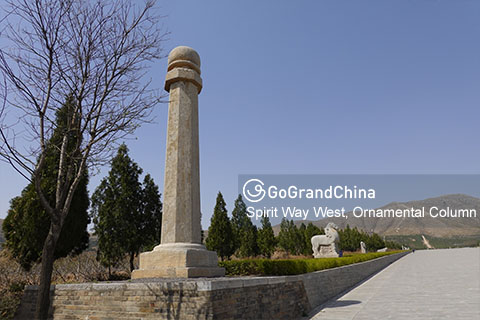
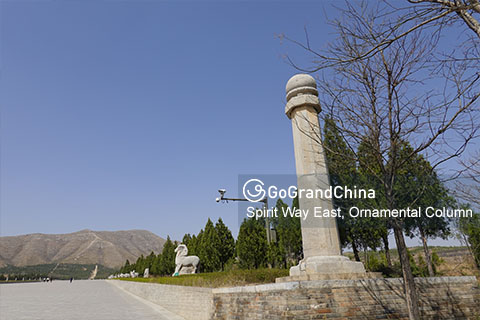
Winged Horses
Winged Horses are auspicious animals which symbolize power and fortune in Ancient China. The winged horses of Tailing Mausoleum are 2.45 meters tall and the body of the winged horse is 2.4 meters long. The winged horse on the east side of the spirit way looks like to be ready to fly.
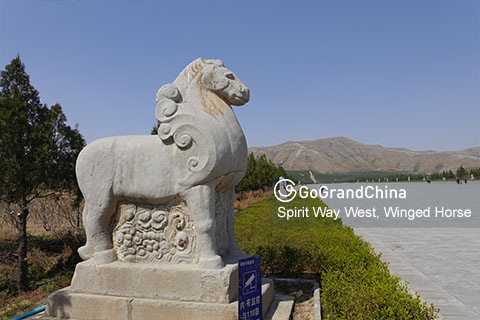
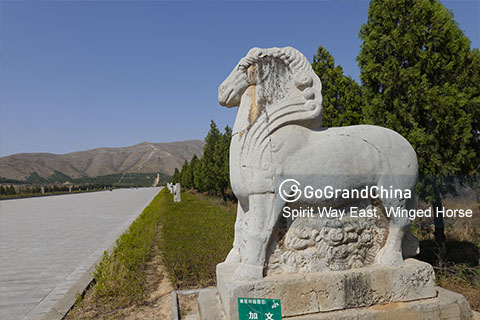
Ostriches
Qianling Tomb of the Tang Dynasty was the first to use ostrich on the Spirit Way. The Khan of the Western Turks presented an ostrich to the Tang court in 620 and the Tushara Kingdom sent another in 650. Ostriches were arranged on the Spirit Way as a symbol of the Tang Dynasty’s power and influence over its foreign neighbors. The ostriches of Tailing Mausoleum were carved on a 2.1 meter tall and 1.8 meter wide stone screen. The ostriches are 1.15 meters tall and their bodies are 1.5 meters long.
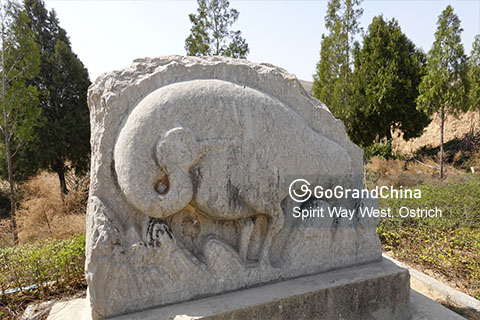
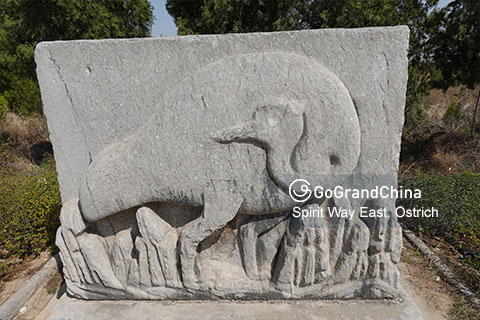
Saddled Horses
Saddled horses were horses of the guard of honor. Five pairs of saddled horses with grooms would be arranged facing each other along the spirit way when they were first placed. The saddled horses at Tailing Mausoleum are 1.6 -1.7 meters tall and 1.8 meters long while grooms are 1.5 meters tall. Four horses with their grooms were destroyed during the Cultural Revolution. Today, six horses are still standing, five on the east side of the Spirit Way and one on the west side of the Spirit Way.
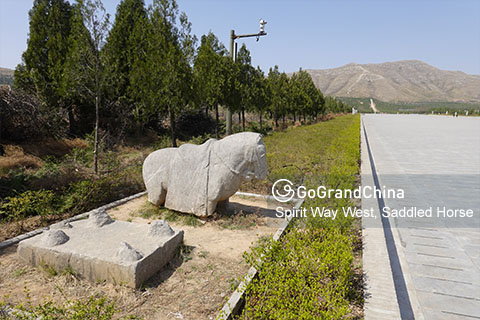
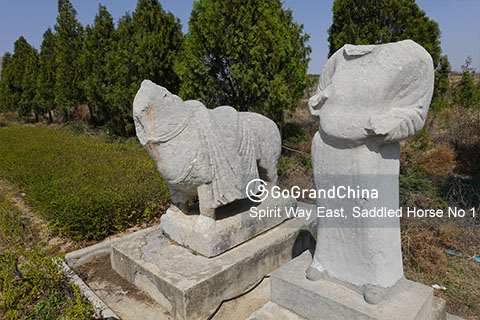
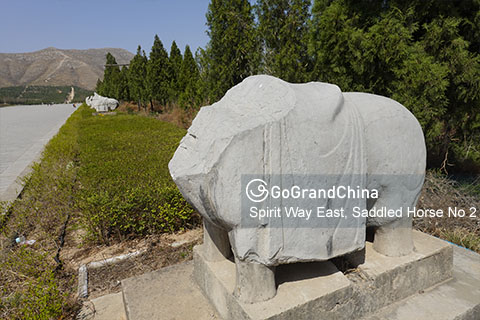
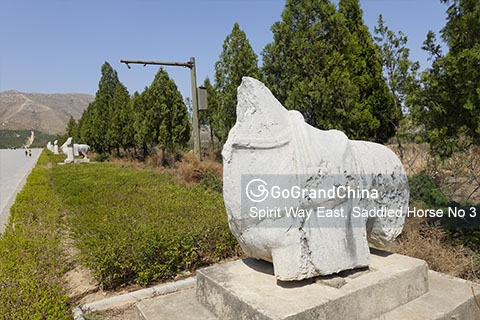
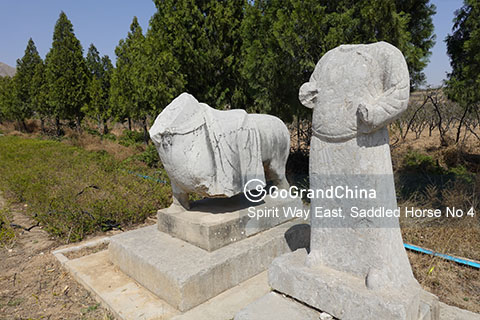
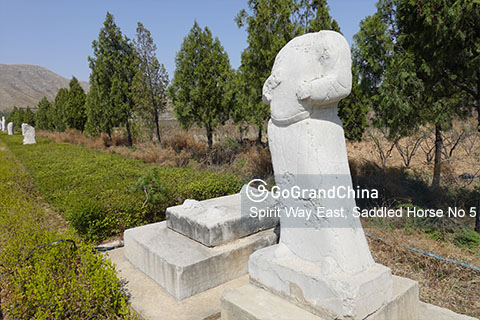
Guardian Statues of Civil & Military Officials
The guardian statues of civil and military officials are called Wengzhong in Chinese. Wengzhong was a giant man of great strength and a general of China's first emperor, Emperor Qin Shihuang. He was garrisoned in Lintao, the west end of the Qin Dynasty built Great Wall of China and had earned merit in the fight against the Huns. After his death, Emperor Qin Shihuang ordered a bronze statue of Wengzhong to be made after him, placed outside his palace in Xianyang and from then on, bronze or stone statues of humans were called Wengzhong. These stone guardian statues of Wengzhong symbolize real civil and military officials guarding the imperial tombs. Tailing Mausoleum was the first to arrange 10 statues of civil officials on the east side of the spirit way and 10 statues of military officials on the west side of the spirit way. Civil officials are clasping a note-tablet while military officials are holding a sword. They are 2.93 meters tall and the width of the body is 0.9 meters. The faces of some of the military officials suggest that they were foreigners serving in the Tang Dynasty army.
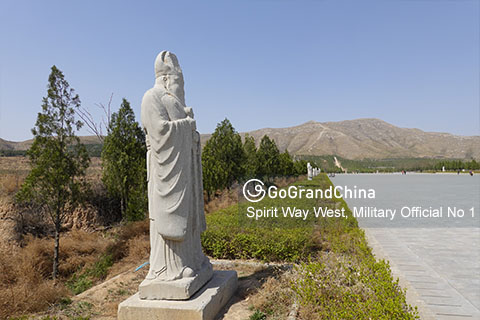
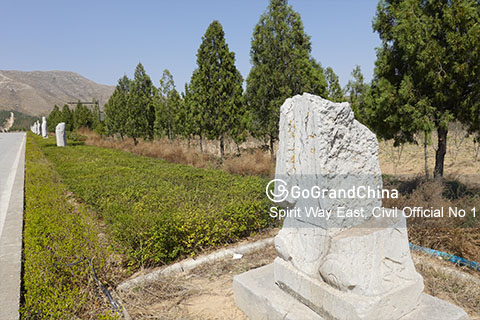
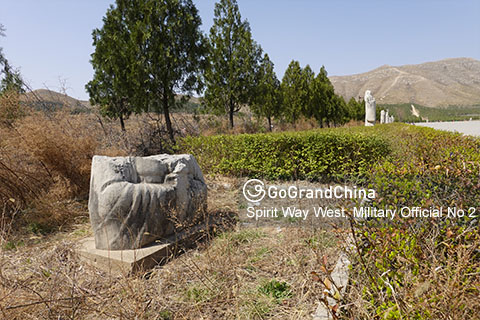
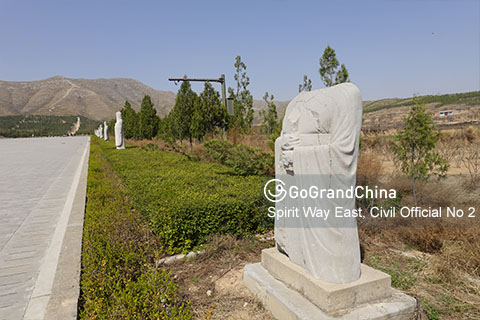
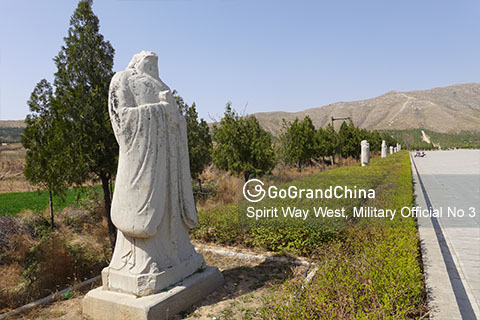
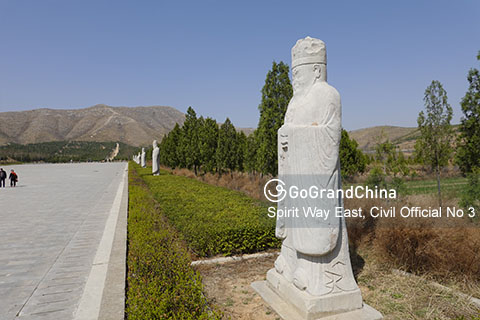
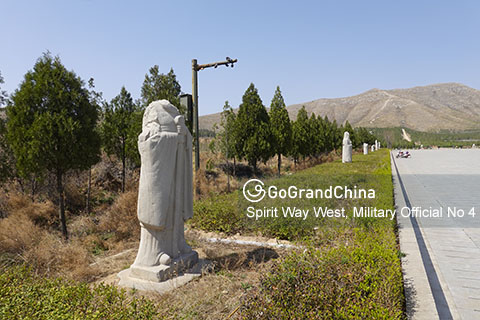
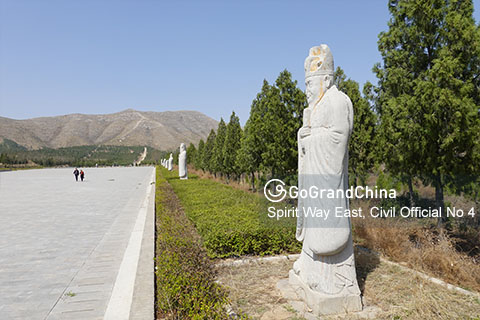
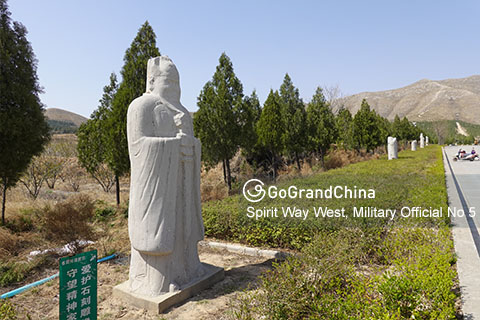
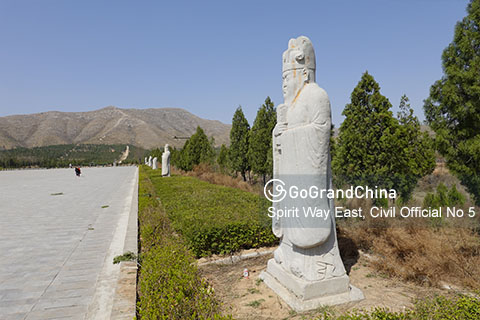
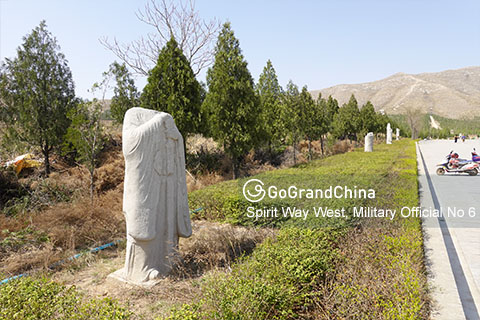
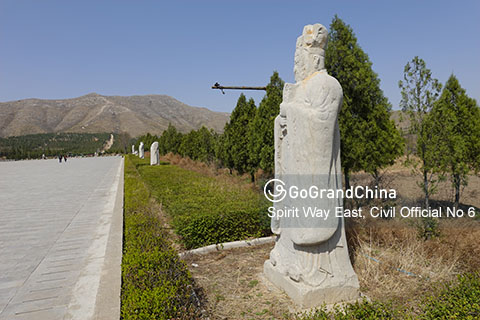
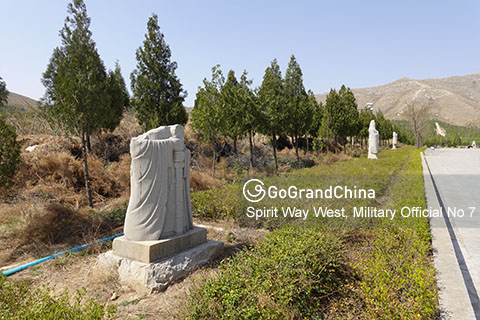
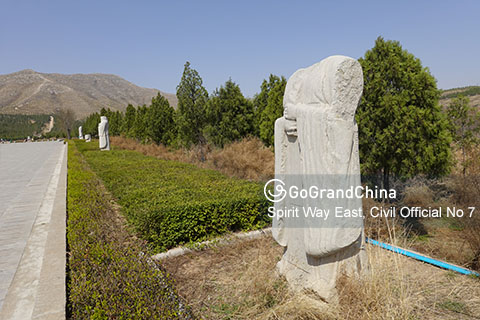
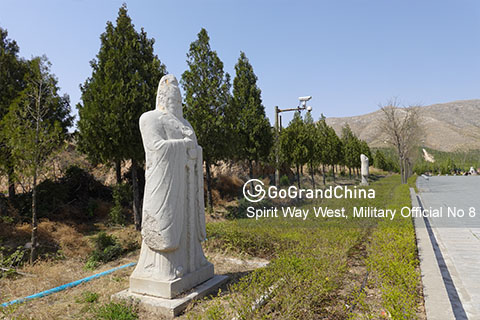
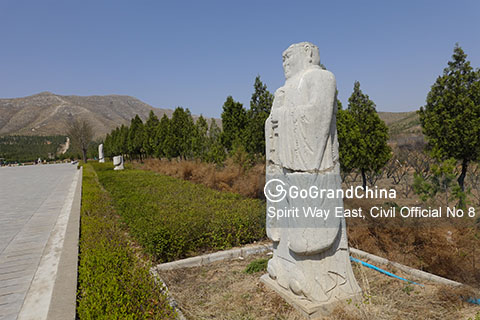
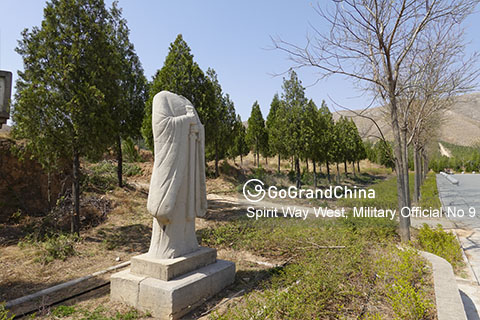
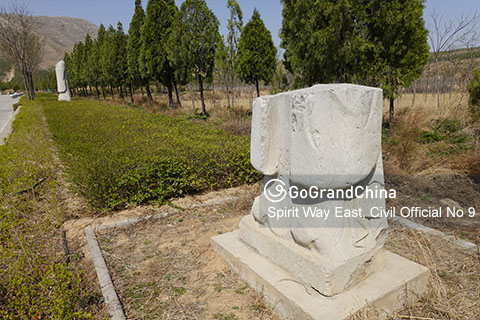
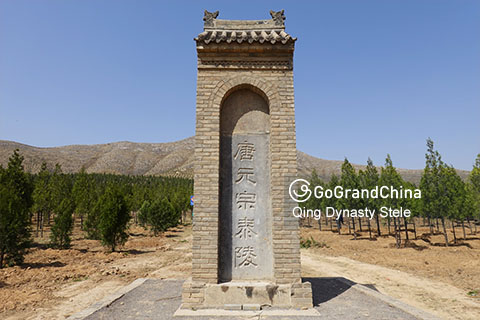
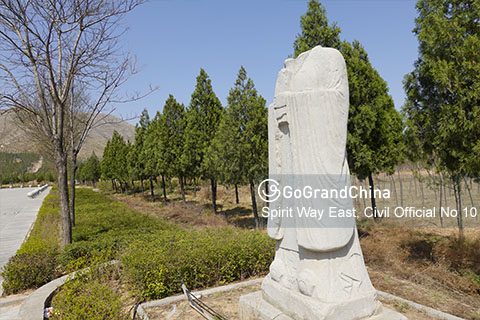
The South Vermilion Bird Gate
The vermilion bird is one of the Four Symbols of the Chinese constellations representing the direction south. It is described as a red bird that resembles a pheasant with a five-colored plumage and is perpetually covered in flames. The south gate of Tailing Mausoleum is called the Gate of Vermilion Bird which symbolizes the Gate of Heavenly Succession, the south gate of the Palace City of Chang'an (today's Xian) where Tang Dynasty emperors lived with his family. The vermilion bird gate used to be connected with the inner wall of the tomb to the East Azure Dragon Gate, West White Tiger Gate and North Black Tortoise Gate. Two crouching lions are still guarding the ruins of Vermilion Bird Gate Towers. The heights of lions are between 1.75 meters and 1.8 meters and 0.87 meters wide in chest.
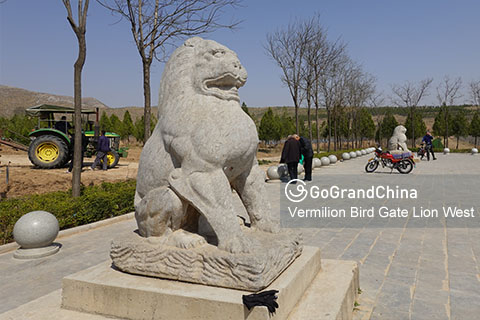
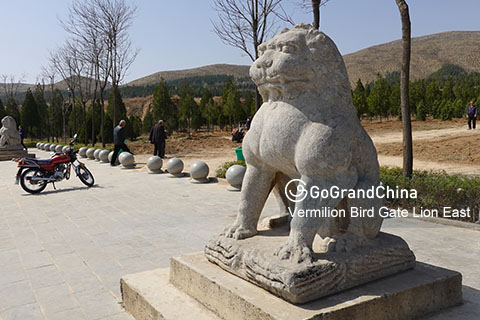
The East Azure Dragon Gate
The azure dragon is one of the Four Symbols of the Chinese constellations representing the direction east. The east gate of Tailing Mausoleum is called the Azure Dragon Gate, located on the 636 meter elevated Crouching Tiger Hill. This gate used to be connected by the tomb's inner wall with the South Vermilion Bird Gate, West White Tiger Gate and North Black Tortoise Gate. Today, the two earthworks of the gate tower foundation are still guarded by two stone lions. These two lions are 1.8 meters tall, 1.2 meters long and 1 meter wide in chest.
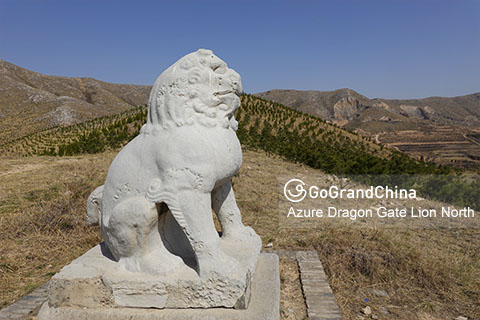
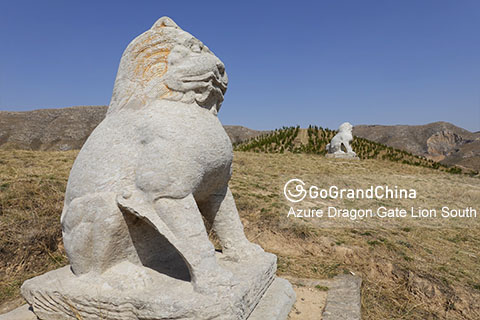
The West White Tiger Gate
The white tiger is one of the Four Symbols of the Chinese constellations representing the direction west. The White Tiger Gate used to be connected by the inner wall of the tomb with the south Vermilion Bird Gate, east Azure Dragon Gate and north Black Tortoise Gate. The gate towers of West White Tiger Gate were flattened and south guardian lion was damaged during the Cultural Revolution between 1966 and 1976. Today, only the lonely north lion is guarding this severely damaged gate.
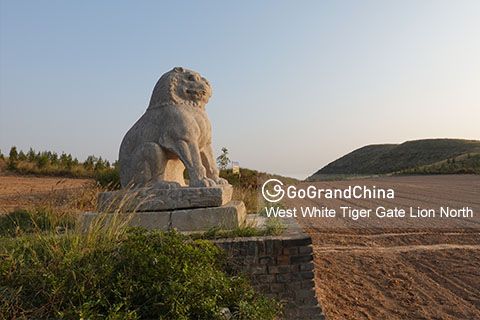
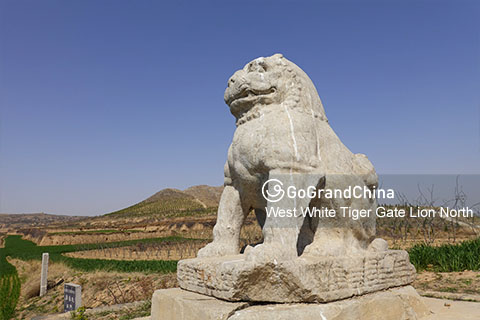
The North Black Tortoise Gate
The black tortoise is one of the Four Symbols of the Chinese constellations representing the direction north. It is usually depicted as a tortoise entwined together with a snake. The Black Tortoise Gate used to be connected with the tomb's inner wall to the East Azure Dragon Gate, South Vermilion Bird Gate, and West White Tiger Gate. A miniature spirit way was built outside the Black Tortoise Gate in correspondence with the grand spirit way located outside the Vermilion Gate. Tailing Mausoleum's Black Tortoise Gate suffered damages during the Cultural Revolution between 1966 and 1976. The earthwork of west Gate Tower was flattened and two saddled horses with grooms were broken into pieces. Today, two crouching lions are still guarding the Black Tortoise Gate. Three saddled horses with grooms are lined on the east side of the miniature spirit way, only one horse is standing on the west side of the miniature spirit way.
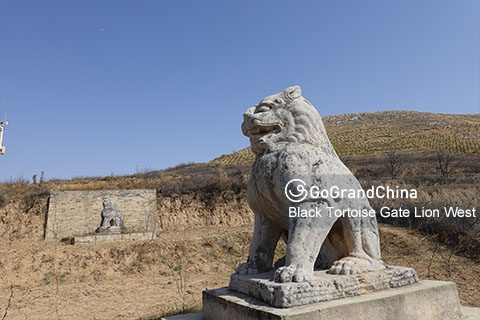
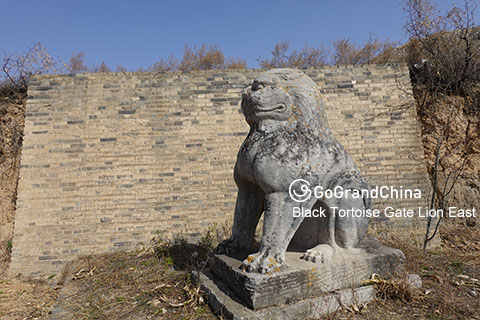
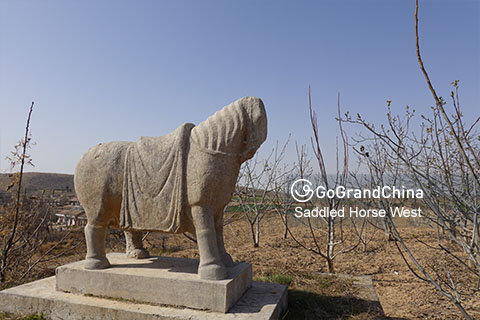
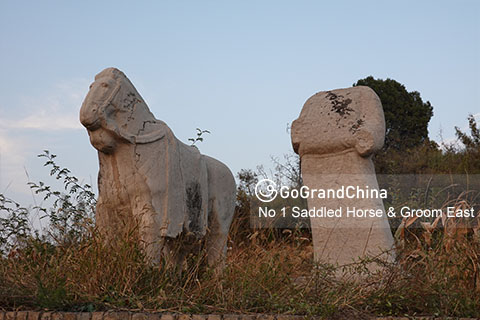
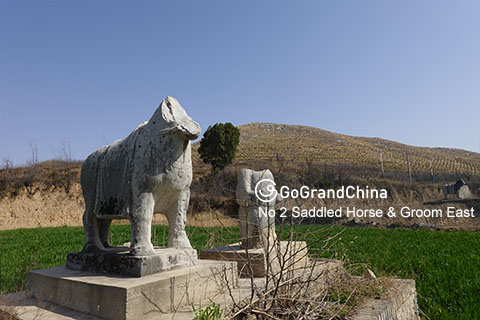
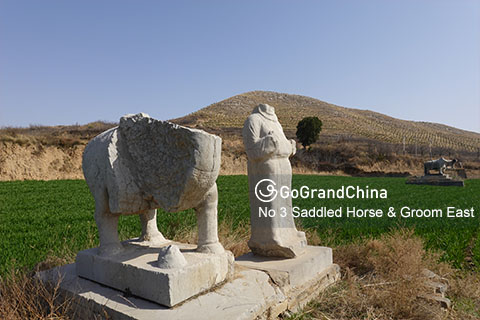
How to get to Tailing Mausoleum of Tang Dynasty
• Tailing Mausoleum is located 130 km away from downtown Xian.
• Rent a car/bus from GGC to enjoy a hassle free private transfer from hotels in Xian to Tailing Mausoleum.
Additional travel advice on Tailing Mausoleum of Tang Dynasty
• Please wear comfortable hiking shoes if you want to hike up the 851 meter elevated Mount Jinsu where the tomb chamber is located.
• UV is very strong in summer, please wear sunscreen, hat and sunglasses to prevent sunburns.
There are no products matching the selection.

